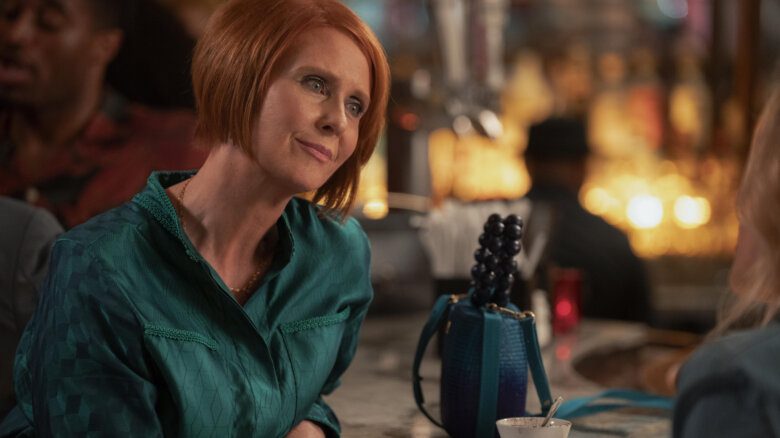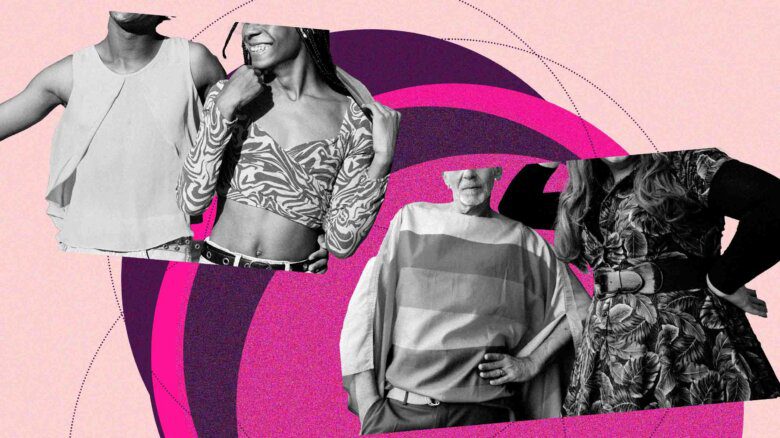In his tight office at the back of the bar, owner Bill Hievegi watches three monitors displaying images captured by the security cameras on each floor of Remington’s. On the main- and second-floor monitors, dancers swagger through the bar, oozing machismo as they solicit onlookers for a private dance where they make their money. One stripper demonstrates cool, fluid movement as he disrobes onstage.
On the third monitor, however, Hievegi sees a very different scene unfolding. The dancers’ private change room and showers in the basement are a flurry of paranoia and self-doubt as the men adjust their hair, makeup, jewellery and costumes (namely underwear). One helps another to master a dance move sure to elicit crowd attention.
The dancer disappears from the change-room screen reappearing seconds later on the main-floor camera, all self-assured and cocky.
Oh, what bar patrons don’t see going on behind the scenes at their favourite watering hole. Though drowned out by thumping music and masked by dark lighting, the goings on behind the bars and Staff Only doors can be as entertaining as the front-of-the-house show.
The job of a bartender, for example, comes with some amount of celebrity, which can create drama where you least expect it. First, there’s the competition for spots.
“We get a dozen or two applications per month,” says Woody’s manager Dean Odorico. A large chunk of the resumés are from straight men savvy enough to know that they’ll make more tips than at a straight bar where female bartenders are favoured. For Odorico, it’s like casting a movie with demographic diversity in mind.
“I look for ones that will attract a different crowd, from age groups, leather aficionados or sports fans,” says Odorico. “They don’t have to be a Greek god.” Nor do staff have to be gay. At Remington’s, for example, Hievegi estimates that up to 70 percent of his dancers are straight. At Slack’s, part of the fun for patrons is trying to figure who’s queer – their girlie-girl staff are hard to peg.
The bartenders often jockey for the best assignments. At Woody’s, the front and back bars are the busiest; at the Black Eagle, it’s the one on the second floor. “That’s where a lineup tends to form and that’s where everybody wants to work,” says Black Eagle manager Ed MacNeil.
Another skill MacNeil says Church St’s bartenders need to learn is how to handle customers interested in more than a drink.
“Every guy who goes into a bar has a bartender they are secretly in love with,” he says. “Most people don’t give a voice to it and the majority doesn’t press the matter.”
Usually don’t press the matter, that is. MacNeil recalls one customer who struck conversation and poses to attract his attention until the patron eventually became overcome with frustration.
“He stomped up to the bar, slammed down a bouquet of flowers and stomped back out,” MacNeil says. “He did return but never brought it up – which was a relief.”
Robin Corriveau, a manager and bartender at Remington’s, says a customer’s adoration for a bartender is usually fleeting. “Sometimes it feels like there’s a bartender of the week, someone fresh and new who attracts the customers from week to week.”
And there is the lustful drama going under the radar of patrons.
“There have been some issues around two employees becoming involved and then things not going so well and it can be a real problem,” says Steve Clegg, Woody’s associate general manager. “We’ll try to schedule them apart from each other but that’s not always possible so they’ll check out each other’s bar and see who they’re talking to and get into a fuss over that…. Our bartenders meet thousands of people here so if people are watching with jealous eyes, it can be a real nuisance.”
From obeying the Liquor Licence Act to stamping out illegal drugs, bar owners have more rules to follow than you could imagine.
“It’s like being stripped naked and set on fire and told to jump through hoops, after which they tell you there’s still more to do,” says Carol Hylton, operation manager of Slack’s, about getting a liquor licence.
The owners of Slack’s, which has been in the process of getting off the ground since the summer, had to spend more than $10,000 to bring the premises up to fire code, including putting sprinklers in its walk-in fridges. (Asked how much it cost overall to get the bar up and running, Hylton’s eyes start to wander. More than $100,000? “Yes.” More than $200,000? “Higher.” $300,000? “It definitely cost a lot.”)
Crews And Tango owner Gary Manz says he is dealing with several levels of government and the police regularly – even weekly.
“It seems like a heavily policed industry,” he sighs.
“I think the biggest issue is that there’s just so much now that you’re responsible for when operating a bar,” says Terry Mundell, president of the Ontario Hotel, Motel And Restaurant Association. “It’s a full-time job just understanding all the legislation and then making certain you meet all the requirements, from pricing, minors, advertising and risk management issues so that your insurance doesn’t go wild.”
MacNeil says he’s seen enforcement of liquor laws become much more rigid in the last 10 years. Some of it he agrees with, while some leaves him scratching his head.
“Why is it against the law to carry a drink up the stairway? That’s the sort of law that was old when Queen Victoria was young,” MacNeil says.
There are tricks to getting customers to comply. To keep drugs out of the bar during Pride, staff at The Black Eagle coat all flat surfaces in the bathroom with lube. “You should hear the screams when a guy sees his line of coke dissolve before his eyes,” says MacNeil. “It’s a wonderful old custom that smart bar operators have revived.”
A big part of running a bar is luring customers and making it easy for them to part with their hard-earned dollars. Hievegi believes customers are generally spending less nowadays.
“I think people are more conscientious of spending money when they go out because more and more are saving to buy a house or paying down the mortgage,” speculates Hievegi.
Some bars rely on their patrons to generate the entertainment (“You wouldn’t believe how many straight women come here, and the straight guys who tell me it’s a great place to pick up straight women,” says Larry Peloso, co-owner of Lüb). But most rely on at least some performances. In this category, DJs and drag queens dominate. You try wrangling these divas.
“When it comes to drag queens, they are people like anyone else,” Manz says. “For the most part, if you treat them well, they wind up treating you well…. Though infrequently, while under the influence of alcohol, they will say things they regret. That can be a problem.” Manz refuses to name names.
Odorico remembers one drag queen who insisted on performing a ballad among her typically upbeat songs on a Sunday night at Woody’s. “She sang it and people were looking at one another and didn’t really know what to do or how to react,” he says laughing.
Fly Nightclub manager Gaelen Patrick recalls a night of entertainment that fizzled pretty quickly — Aug 20, 2005, when the downtown was hit by a power outage.
“It was our third annual splash party where guests come dressed in Speedos and everyone has water guns and has fun squirting one another,” Patrick recalls. “Just when the party had really started and DJ Shawn Riker was spinning, the power went off,” leaving Patrick and his 600 guests following an emergency evacuation plan to ensure everyone’s safety. “It certainly wasn’t the nightcap people were expecting.”
Either through experience or evidence, many customers seem intent on leaving their mark on a favourite bar. More often than not, the bathroom is involved.
Graffiti is commonplace. “I’ve seen some nice art over the years, which is better than something horrible, but it still wasn’t commissioned,” says Clegg.
Since opening this summer, Slack’s has replaced its toilets three times, finally installing industrial-commercial grade toilets.
“Girls flush a lot,” says Hylton.
“We’ve pulled more things out of a toilet,” laughs MacNeil. Church St’s receptacles have been stopped up with a menagerie of items, more than simply toilet paper — of which MacNeil estimates the bar uses about 1,500 industrial rolls per year.
“A few years ago, one of the busboys was plunging a toilet when out popped a dildo,” says MacNeil. “We all had a good laugh. On another occasion, we brought in a plumber who must have been straight because he was wondering how a curtain ring found its way into the toilet.”
There was a similar mystery after Lüb’s opening party, says Peloso.
“We found a pair of men’s underwear behind a toilet in the washroom. We don’t know whose they were, how they got there or why,” says Peloso.
Manz says the reason to flush under-garments and toys is obvious. “More often than not you look for an atmosphere of fun and entertainment but I also suspect each gay person goes to a bar to get laid and the sooner the better.”
Apparently beer isn’t the only thing sloshing around in our mouths in bars. Clegg estimates his bar sells 30,000 bottles of beer each month, most of it Labatt Blue and Molson Dry. But it’s gum that presents the biggest problem. “We spend hours scraping it up every morning.”
MacNeil made another surprising discovery on one of The Black Eagle’s naked nights. “I went onto the patio and found two men were fucking really enthusiastically,” he says. “I asked them to stop, get their clothes and go home, and one responded, ‘But I didn’t get my first warning yet!'” While MacNeil admits some patrons were looking on, “at a bar like ours, it generally didn’t cause that much of stir.”

 Why you can trust Xtra
Why you can trust Xtra


